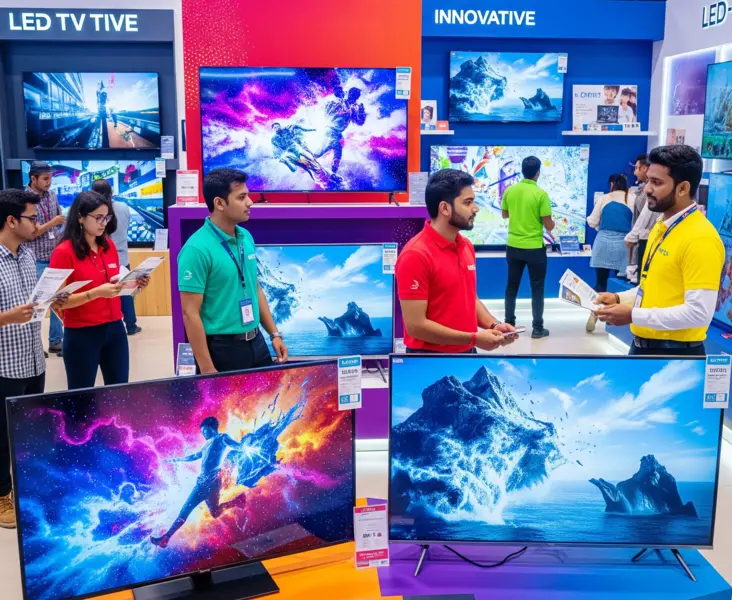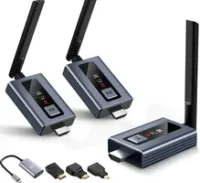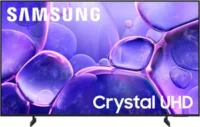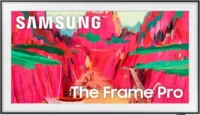The Ultimate Guide to LED TV Sales: Mastering Channel Partners, Distribution Networks & Sales Strategies
Published: 27 Jul 2025
Introduction:– The Glowing World of LED TV Sales led tv sales
The LED TV market is a $150+ billion global industry, growing at 7.2% CAGR. But every TV in your living room is a complex network of partnerships, logistics and sales strategy. Whether you are chasing a consumer by appointments, optimization of a dealer shelves or a manufacturer scaling production, this guide lights up the entire ecosystem. We’ll explore:

- How channel partners drive 65% of sales
- Why distribution networks make/break market share
- Real pricing psychology that hooks buyers
- Future trends like micro-LED and AI-driven retail
(Fun fact: 83% of buyers don’t know how TVs reach stores! Let’s fix that.)
Part 1: LED TV sales Market Fundamentals
1.1 Evolution of TV Tech: CRT to QLED
- CRT Era (1940s-2000s): Bulky tubes, 480p resolution.
- LCD Revolution (2000s): Thinner panels, energy-efficient.
- LED Dominance (2010s): Slimmer, brighter, 4K/HDR.
- Current Frontiers: QLED, OLED, 8K streaming.
Real-World Impact: Samsung’s QLED outsold OLED 3:1 in 2023 by targeting mid-tier pricing ($800-$1,200).
1.2 Market Dynamics & Key Players
- Global Leaders: Samsung (22% share), LG (16%), TCL (11%), Sony (9%).
- Pricing Tiers:
- Budget ($200-$500): TCL, Hisense
- Mid-Range ($500-$1,500): Samsung, LG
- Premium ($1,500+): Sony, LG OLED
- Regional Nuances:
- India: 32% prefer 43″ TVs (small living rooms).
- USA: 65″+ screens dominate (45% of sales).
Part 2: Channel Partners – The Invisible Sales Engine
2.1 Types of Channel Partners
| Partner Type | Role | Example |
| Distributors | Bulk purchasing, logistics | Ingram Micro, Tech Data |
| Retailers | Direct consumer sales | Best Buy, Croma |
| e-Commerce | Online marketplaces | Amazon, Flipkart |
| VARs | Bundled solutions (TV + sound bar) | System integrators |
2.2 Why Partnerships Make or Break Sales
The LED TV market is a $150+ billion global industry, growing at 7.2% CAGR. But every TV in your living room is a complex network of partnerships, logistics and sales strategy. Whether you are chasing a consumer by appointments, optimization of a dealer shelves or a manufacturer scaling production, this guide lights up the entire ecosystem. We’ll explore:
• How channel partners drive 65% of sales
• Why distribution networks make/break market share
• Real pricing psychology that hooks buyers
• Future trends like micro-LED and AI-driven retail
(Fun fact: 83% of buyers don’t know how TVs reach stores! Let’s fix that.)
Part 1: LED TV Market Fundamentals
1.1 • Access: Distributors place products in 10,000+ stores.
• Cost efficiency: Manufacturers save 30% on logistics.
• Local expertise: Best Bye Geek Squad drove 22% of Samsung’s US sales through installation bundles.
Case study: LG’s partnership with Costco (exclusive 90-day return) increased sales by 18% in 2023.
2.3 Management Channel Struggle
- Problem: Discounts on the web reduce masonry and mortar stores.
- Solution: Sony’s map (minimum advertised price) protects the policy margin.
- Actionable tip: Offer a dealer-exclusive model (eg best of “SS” skis).
Real-World Impact: Samsung’s QLED outsold OLED 3:1 in 2023 by targeting mid-tier pricing ($800-$1,200).
1.2 Market Dynamics & Key Players
- Global Leaders: Samsung (22% share), LG (16%), TCL (11%), Sony (9%).
• Pricing Tiers:
- Budget ($200-$500):- TCL, Hisense
- Mid-Range ($500-$1500): Samsung, LG
- Premium ($1,500+):- Sony, LG OLED
• Regional Nuances:-
- India:- 32% prefer 43″ TVs (small living rooms).
- USA:- 65″+ screens dominate (45% of sales).
Part 3: Distribution Networks – From Factory to Living Room
3.1 Distribution Models Compared to led tv sales
| Model | Pros | Cons | Best For |
| Direct (D2C) | Higher margins | High logistics cost | Premium brands (Sony) |
| Hub-Spoke | Faster delivery | Complex management | National markets (LG India) |
| 3PL Outsourced | Cost-effective | Less control | Budget brands (TCL) |
3.2 Logistics Deep Dive
- Shipping: 55″ TVs cost $8/unit by sea vs. $45 by air.
- Warehousing: AI predicts regional demand (e.g., 20% more 75″ TVs in Texas suburbs).
- Last-Mile Delivery: Best Buy uses store-as-warehouse to cut delivery to 4 hours.
3.3 Inventory Management
- JIT (Just-in-Time): Samsung’s 72-hour restocking for hot sellers.
- ABC Analysis:
- A Items (Top 10% SKUs): 55″ 4K TVs (70% sales).
- C Items: Niche 8K models (stocked only in metro hubs).
Part 4: Sales Strategies That Convert
4.1 Pricing Psychology
- Charm Pricing: $499 vs. $500 (boosts conversions by 17%).
- Anchoring: Showing “MSRP $1,200” slashed to $799.
- Bundling: TV + Sound bar + $100 Netflix voucher (30% higher cart value).
4.2 Omni channel Tactics
- Click & Collect: Currys (UK) saw 40% online growth via store pickups.
- Virtual Try-On: Amazon’s AR View app reduced returns by 22%.
- Social Proof: “1,200 bought this month” badges on Flipkart.
4.3 Seasonal Campaigns
- Black Friday: Door busters like $198 43″ TVs (loss leaders).
- World Cup: Hisense’s promo with FIFA spiked led tv sales by 55%.
- Diwali: EMI options drove 68% of festive sales in India.
Part 5: Digital Disruption & Future Trends
5.1 e-Commerce vs. Brick-and-Mortar
- Online (45% of sales): Price comparison tools, endless aisles.
- Offline (55%): Demo zones, instant gratification.
- Hybrid Win: Samsung’s “Reserve Online, Setup In-Store” increased foot traffic by 30%.
5.2 Emerging Tech
- AI Personalization: Crutchfield’s chat bot recommends TVs based on room size.
- Sustainability: LG’s carbon-neutral shipping (charges $5 extra—13% opt-in).
- Micro-LED: Coming to mid-range by 2026 (half current pricing).
Part 6: Actionable Insights for Stakeholders
For Manufacturers:
- Partner Tiering: Reward top distributors with MDF (Market Development Funds).
- Anti-Gray Market: Serialized QR codes to track leaks.
For Retailers:
- Planogram Magic: Place mid-priced ($699) TVs at eye level (75% sell-through).
- Upsell Training: Staff incentives for selling $200+ extended warranties.
For Consumers:
- Buying Windows: Shop in March (new model launches = older model discounts).
- Hidden Specs: Check refresh rate (120Hz > 60Hz for sports).
Conclusion: Winning the LED TV Game
Success hinges on synergy:
- Manufacturers must empower channel partners.
- Retailers need data-driven led tv sales.
- Consumers should time purchases strategically.
With 8K streaming, foldable screens, and AI retail, the future is bright (and energy-efficient!). Whether you’re moving 1,000 units/month or buying one TV for game day—leverage these insights! 🏆
FAQ Section about led tv sales ❓
To prevent price wars. Example: Costco’s “L” series LG TVs have different ports but same panel.
Bulk discounts trickle down. A distributor buying 10,000 units gets 25% off MSRP, enabling retailer markdowns.
Retailers earn 8-15% on premiums (Sony) and 3-8% on budget (TCL).
Not yet—micro-LED costs 4x more. By 2027, prices will drop 60%.
Buy from “fulfilled by Amazon” or authorized partners. Check serial numbers on brand websites.

- Be Respectful
- Stay Relevant
- Stay Positive
- True Feedback
- Encourage Discussion
- Avoid Spamming
- No Fake News
- Don't Copy-Paste
- No Personal Attacks



- Be Respectful
- Stay Relevant
- Stay Positive
- True Feedback
- Encourage Discussion
- Avoid Spamming
- No Fake News
- Don't Copy-Paste
- No Personal Attacks





